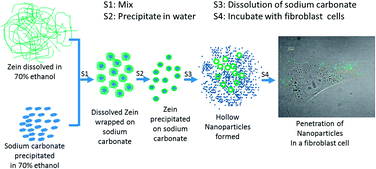Hollow nanoparticles from zein for potential medical applications
Abstract
Hollow

* Corresponding authors
a Department of Textiles, Clothing and Design, University of Nebraska-Lincoln, 234, HECO Building, Lincoln, NE, USA
b
Department of Biological Systems Engineering, University of Nebraska-Lincoln, 234, HECO Building, Lincoln, NE, USA
E-mail:
yyang2@unl.edu
Fax: +1 402 472 0640
Tel: +1 402 472 5197
c Nebraska Center for Materials and Nanoscience, University of Nebraska-Lincoln, 234, HECO Building, Lincoln, NE, USA
Hollow

 Please wait while we load your content...
Something went wrong. Try again?
Please wait while we load your content...
Something went wrong. Try again?
H. Xu, Q. Jiang, N. Reddy and Y. Yang, J. Mater. Chem., 2011, 21, 18227 DOI: 10.1039/C1JM11163A
To request permission to reproduce material from this article, please go to the Copyright Clearance Center request page.
If you are an author contributing to an RSC publication, you do not need to request permission provided correct acknowledgement is given.
If you are the author of this article, you do not need to request permission to reproduce figures and diagrams provided correct acknowledgement is given. If you want to reproduce the whole article in a third-party publication (excluding your thesis/dissertation for which permission is not required) please go to the Copyright Clearance Center request page.
Read more about how to correctly acknowledge RSC content.
 Fetching data from CrossRef.
Fetching data from CrossRef.
This may take some time to load.
Loading related content
